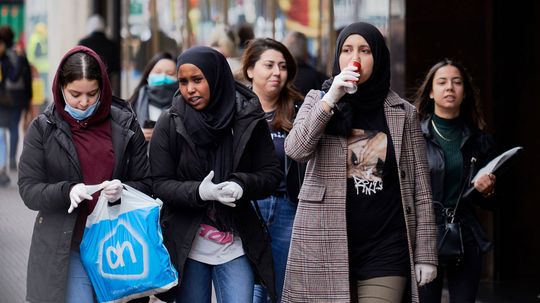Table of Contents
Prepare to embark on an enlightening journey as we delve into the enigmatic realm of herd immunity, and unravel its profound impact in shielding nations from pernicious diseases. Brace yourself for a captivating exploration!
An Unveiling of the Mechanisms Behind Herd Immunity
Let us first decipher the intricate workings that underpin this phenomenon known as herd immunity. At its core, it is a collective defense mechanism wherein a significant proportion of individuals within a population develop resistance against infectious agents, thereby safeguarding those who are vulnerable or unable to receive immunization themselves.
This remarkable feat is achieved through two primary avenues: natural infection and vaccination. When an individual contracts an illness and subsequently recovers, their body acquires antibodies that bestow them with immunity against future encounters with the same pathogen. Similarly, vaccines introduce weakened or inactive forms of pathogens into our bodies, stimulating our immune system to produce protective antibodies without causing severe illness.
However, achieving optimal levels of herd immunity necessitates reaching specific thresholds within populations. The precise percentage required varies depending on factors such as disease virulence and transmission dynamics; nevertheless, estimates often hover around 70-90%.
A Shield Against Disease: The Power of Collective Defense
Herd immunity acts as an impenetrable fortress guarding societies against rampant outbreaks by impeding the spread of contagious diseases. Picture this: when most individuals possess robust defenses against pathogens due to either prior infections or vaccinations, these microorganisms struggle to find susceptible hosts necessary for their survival and propagation.
In essence, each person protected by herd immunity becomes another brick in society’s formidable wall—rendering it increasingly arduous for diseases to infiltrate communities and wreak havoc. Vulnerable individuals, such as newborns, the elderly, or those with compromised immune systems, are shielded by this collective defense mechanism.
Moreover, herd immunity serves as a vital tool in curbing the transmission of diseases that lack effective vaccines or treatments. By reducing the prevalence of these ailments within populations, we can mitigate their impact on public health and prevent devastating consequences.
The Crucial Role of Vaccination: A Pillar of Herd Immunity
Vaccination is an indispensable cornerstone in fortifying herd immunity against infectious diseases. Through widespread immunization campaigns, nations can bolster their defenses and stave off potential epidemics. Vaccines not only protect individuals from falling victim to debilitating illnesses but also contribute significantly to shielding vulnerable members of society who cannot receive vaccinations due to medical reasons.
However, it is crucial to address vaccine hesitancy—a growing concern that threatens our collective well-being. Misinformation and unfounded fears surrounding vaccines have led some individuals astray from embracing this powerful preventive measure. To safeguard ourselves effectively through herd immunity, it is imperative for communities to foster trust in scientific advancements and prioritize evidence-based decision-making when it comes to vaccination.
In Conclusion: The Shielding Power of Herd Immunity
Herd immunity stands tall as a formidable guardian against the relentless onslaught of infectious diseases—offering respite amidst turbulent times. By harnessing its protective might through natural infections and comprehensive vaccination efforts alike, societies can forge an impenetrable barrier that shields both the strong and vulnerable among us.




